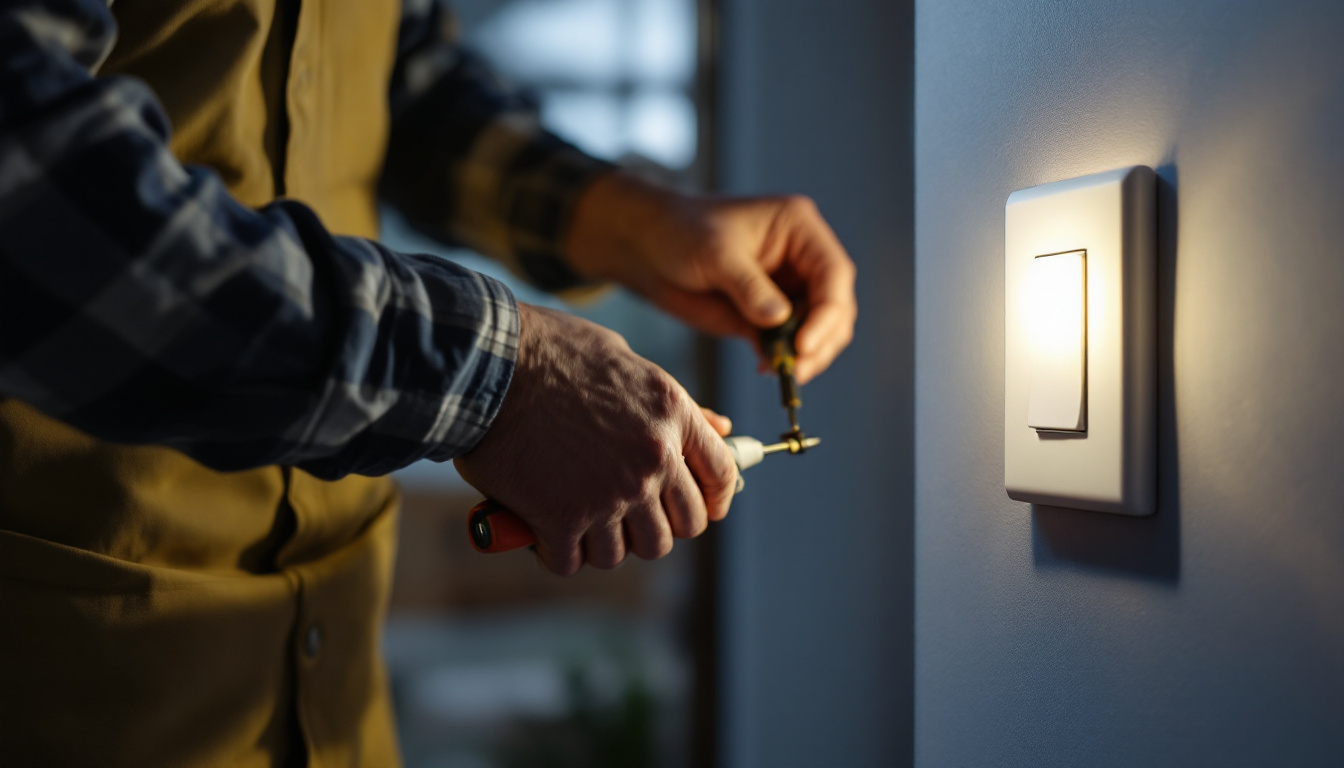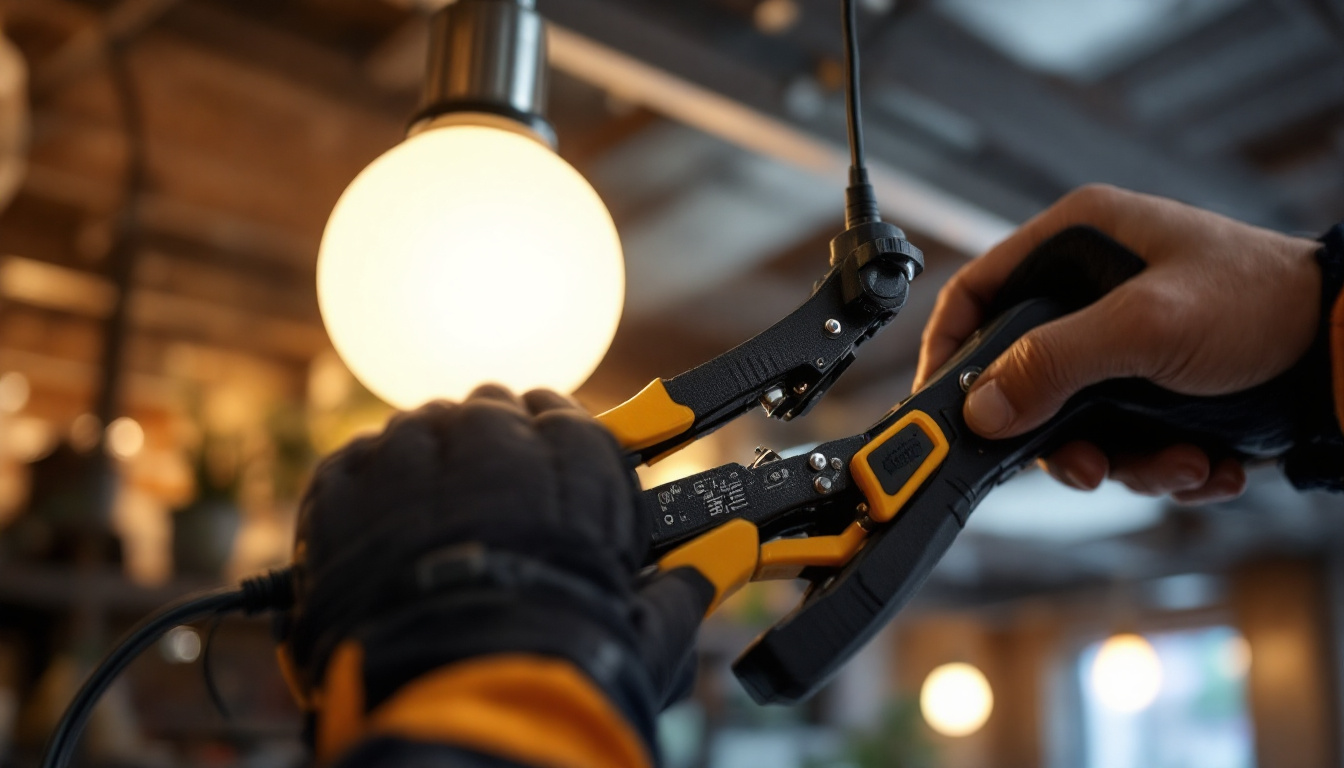

For lighting contractors, understanding the intricacies of electrical switches is crucial for ensuring safety, efficiency, and reliability in installations. One of the most common types of switches encountered in residential and commercial settings is the single pole switch. This article delves into the essential aspects of single pole switches, offering insights that can enhance the expertise of lighting contractors.
A single pole switch is designed to control a light fixture or a set of fixtures from a single location. It is the most straightforward type of switch, making it a staple in both new installations and renovations. By grasping the fundamental workings of a single pole switch, contractors can better serve their clients and ensure that installations meet both functional and safety standards.
The primary function of a single pole switch is to complete or break the circuit that powers a light fixture. When the switch is in the “on” position, the circuit is closed, allowing electricity to flow to the light. Conversely, when the switch is “off,” the circuit is open, stopping the flow of electricity. This simple mechanism is what makes the single pole switch a popular choice for many lighting applications.
Typically, a single pole switch consists of two terminals and a toggle. The switch connects to the hot wire, while the other terminal connects to the light fixture. Understanding this basic functionality is essential for troubleshooting and installation. Additionally, many modern single pole switches come equipped with features such as built-in indicators that show when the light is on, enhancing usability and safety, especially in dimly lit areas.
Single pole switches are versatile and can be used in various lighting applications. They are commonly found in residential settings, controlling overhead lights, table lamps, and outdoor lighting fixtures. In commercial environments, they can be used to manage task lighting, hallway lights, and other essential lighting systems.
Moreover, the straightforward design of single pole switches makes them ideal for installations where simplicity and ease of use are priorities. For instance, in spaces where multiple switches would complicate the design, a single pole switch can provide a clean and efficient solution. Furthermore, they are often used in conjunction with dimmer switches to allow users to adjust the brightness of their lighting, enhancing the ambiance of a room while maintaining the single pole switch’s fundamental functionality. This adaptability makes them not only practical but also a key component in modern lighting design, allowing for both aesthetic appeal and energy efficiency.
Proper installation of single pole switches is critical to ensure safety and functionality. Lighting contractors must adhere to best practices and local electrical codes to avoid potential hazards. Here are some key considerations during installation.
Before beginning the installation process, it is essential to gather the necessary tools and materials. A standard installation will typically require a screwdriver, wire strippers, electrical tape, and a voltage tester. Additionally, having the right type of single pole switch is crucial, as they come in various styles and ratings. For instance, some switches are designed with a built-in indicator light, which can be particularly useful in dark spaces, allowing users to locate the switch easily.
Contractors should also ensure that they have the appropriate gauge of wire for the circuit. The wire gauge must match the amperage rating of the switch and the connected fixtures, which is vital for preventing overheating and ensuring safety. It is also advisable to use high-quality materials that are rated for the specific environment in which they will be installed, such as moisture-resistant wiring in areas prone to humidity.
When wiring a single pole switch, it is important to follow proper techniques to ensure a secure and safe connection. Begin by turning off the power at the circuit breaker to prevent any electrical shock. Once the power is off, the existing switch can be removed, and the new switch can be installed. It’s beneficial to take a photo of the existing wiring setup before removal, as this can serve as a helpful reference during installation.
Typically, the black (hot) wire is connected to one of the terminals on the switch, while the other terminal connects to the wire leading to the light fixture. The white (neutral) wire should not be connected to the switch but instead should be connected directly to the fixture. Properly securing the wires with wire nuts and using electrical tape for added safety is also recommended. Additionally, ensuring that the ground wire is properly connected to the switch’s grounding terminal is essential for preventing electrical shocks and ensuring compliance with safety regulations.
After the installation is complete, it is crucial to test the switch before finalizing the job. Turn the power back on and use a voltage tester to ensure that the switch is functioning correctly. If the light turns on and off as expected, the installation is successful. If not, double-check the wiring connections and troubleshoot any issues. Furthermore, it’s a good practice to observe the switch’s operation over a few cycles, as intermittent issues can sometimes arise after initial testing.
In addition to functional testing, contractors should also check for any unusual sounds or smells that could indicate a problem, such as buzzing or burning odors. These signs may suggest loose connections or faulty wiring, which should be addressed immediately to prevent potential hazards. Keeping a checklist of all the steps taken during installation can also help in identifying any areas that may need further inspection or adjustment, ensuring a thorough and safe installation process.
Even with careful installation, issues can arise with single pole switches. Being aware of common problems and their solutions can help lighting contractors address client concerns quickly and effectively.
One of the most frequent issues encountered is a switch that does not function. This could be due to several reasons, including a faulty switch, loose wire connections, or issues with the circuit itself. To troubleshoot, first ensure that the circuit breaker is not tripped. If the breaker is fine, check the connections at the switch and the light fixture for any loose or damaged wires.
If the wiring appears intact, the switch itself may be defective and may need replacing. Always ensure that the replacement switch is compatible with the existing wiring and meets the necessary ratings.
Flickering lights can be another common issue associated with single pole switches. This problem may arise from a poor connection at the switch or fixture, or it could indicate a more significant electrical issue within the circuit. To address flickering lights, inspect the connections for tightness and ensure that the wires are securely fastened.
If the flickering persists, it may be worth checking the light bulbs themselves, as faulty bulbs can also cause flickering. In some cases, it may be necessary to consult with a licensed electrician to diagnose potential issues within the circuit.
Safety should always be a top priority when working with electrical systems. Lighting contractors must adhere to safety guidelines to protect themselves and their clients during installations and repairs involving single pole switches.
When working on electrical installations, wearing appropriate personal protective equipment is essential. This includes safety glasses to protect the eyes from debris, gloves to prevent electrical shock, and non-conductive footwear to reduce the risk of grounding issues.
Additionally, contractors should always use insulated tools when working with electrical components to further minimize the risk of electrical shock.
Each region has specific electrical codes and regulations that govern installations. Lighting contractors should be familiar with these codes to ensure compliance and safety. Failure to adhere to local codes can result in fines, increased liability, and potentially dangerous situations.
Regularly reviewing and updating knowledge of local regulations is essential for maintaining a high standard of work and ensuring the safety of all installations.
As technology continues to evolve, so do the designs and functionalities of single pole switches. Lighting contractors should stay informed about the latest advancements to offer clients the best solutions available.
One significant advancement in switch technology is the introduction of smart switches. These devices allow users to control lighting remotely through smartphones or voice-activated assistants. Smart switches often come with features such as dimming capabilities, scheduling, and energy monitoring, making them an attractive option for modern homes and businesses.
Contractors should familiarize themselves with the installation and configuration of smart switches, as they may require additional wiring or integration with home automation systems. Understanding these technologies can provide contractors with a competitive edge in the market.
Energy efficiency is a growing concern for many clients, and single pole switches are no exception. Energy-efficient switches can help reduce electricity consumption and lower utility bills. Contractors should be knowledgeable about options such as LED-compatible switches and those designed to work with energy-efficient lighting systems.
By offering energy-efficient solutions, contractors can appeal to environmentally conscious clients and contribute to sustainable practices in the industry.
In conclusion, single pole switches are an essential component of lighting installations, and understanding their functionality, installation, and troubleshooting is vital for lighting contractors. By adhering to safety precautions, staying informed about advancements in technology, and following best practices, contractors can enhance their skills and provide exceptional service to their clients.
As the electrical industry continues to evolve, staying updated on the latest trends and technologies will not only improve the quality of installations but also foster trust and satisfaction among clients. Embracing these insights will ensure that lighting contractors remain at the forefront of the industry, ready to tackle any challenges that arise.
Ready to elevate your lighting installations with the highest quality single pole switches and other lighting essentials? Look no further than LumenWholesale, where we provide contractors with spec-grade lighting products at unbeatable wholesale prices. With our direct-to-contractor approach, you can access superior lighting solutions without the extra costs. Our extensive selection is designed to meet rigorous industry standards, ensuring your projects shine with reliability and performance. Plus, with free shipping on bulk orders, you can stock up on premium lighting without the worry of hidden fees. Don’t compromise on quality or value—discover wholesale lighting at the best value today and light up your projects with confidence.

Discover the essential checklist for lighting contractors seeking the best LED lights for sale.

Discover how cable grippers can enhance efficiency and profitability for lighting contractors.

Discover why purchasing architectural cylinder lights in bulk from local distributors might not be the best choice.

Discover how overhead lighting fixtures can provide a competitive edge for lighting contractors.
Get notified when NEW deals are released.
Optimize your budget with wholesale discounts.
Only top-quality, specification-grade lighting products.
No additional costs at checkout - what you see is what you pay.
We understand the unique needs of contractors.